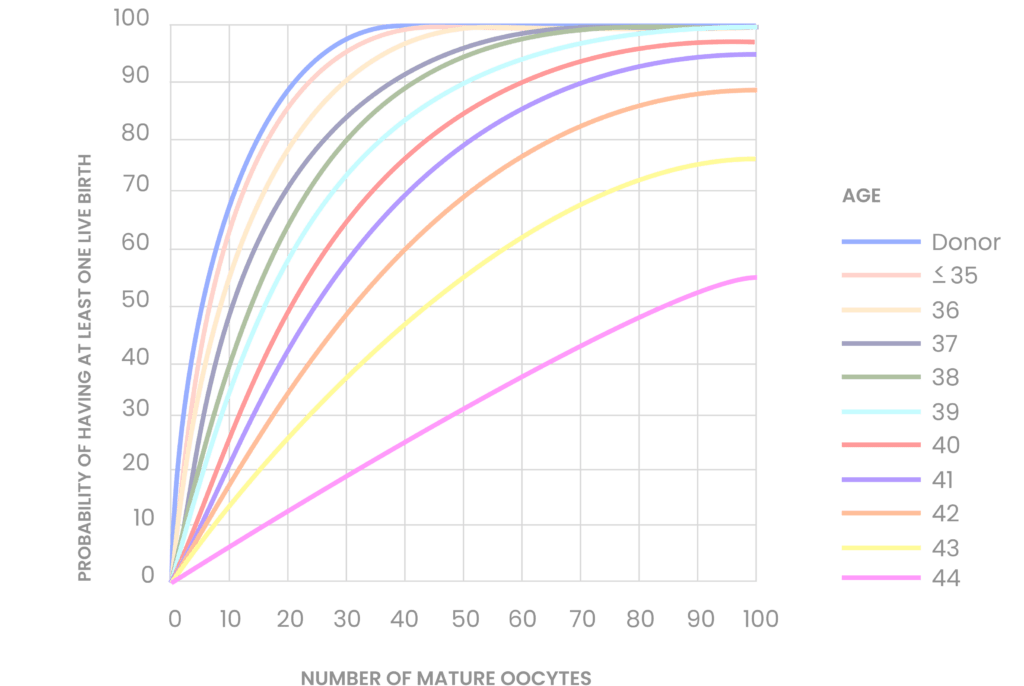
This helpful calculator allows you to calculate your probability of a live birth by entering your age and entering the number of mature eggs you have made available for use (you can estimate).
This allows you to keep increasing the number of eggs available (from a cycle of collection) until you hit your desired live birth probability.
Initially, individuals consult with a fertility specialist to discuss their needs, medical history, and the best timing for egg retrieval. This step is crucial for tailoring the approach to each person’s specific circumstances.
To maximise the number of eggs collected, the ovaries are stimulated with hormone injections, typically for about 10-14 days. These hormones encourage the ovaries to produce multiple eggs during one menstrual cycle.
Throughout the stimulation phase, the response to hormones is monitored through frequent blood tests and ultrasound scans. This monitoring helps assess how the eggs are developing and when they are ready for retrieval.
Once the eggs are mature, a trigger shot of human chorionic gonadotropin (hCG) or another medication is administered to finalise the eggs’ maturation. This shot is timed carefully to prepare the eggs for retrieval at the optimal moment, typically 36-hours later.
The retrieval itself is a minor surgical procedure performed under sedation or anaesthesia. A thin needle is passed through the vaginal wall and into the ovarian follicles under ultrasound guidance. The fluid in the follicles, containing the eggs, is aspirated, and the eggs are collected.
The retrieved eggs are examined in a lab to determine their maturity and quality. Mature eggs are then rapidly frozen using a process called vitrification, which preserves their viability for future use.
Post-procedure, there might be some cramping or discomfort, but most individuals can resume normal activities within a day or two. Specific instructions are provided for recovery based on individual circumstances.

Source: Journal of Human Reproduction
Get in touch with our friendly team to arrange an appointment with one of our fertility specialists.
